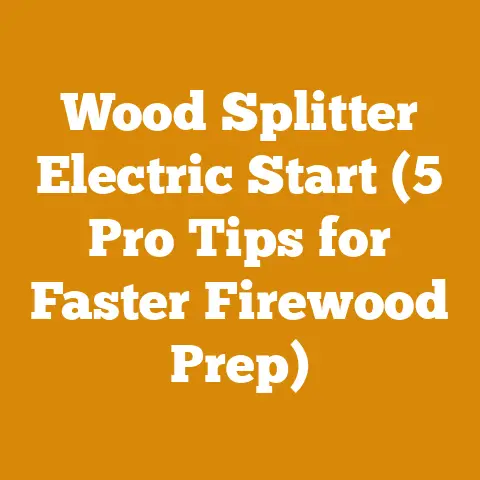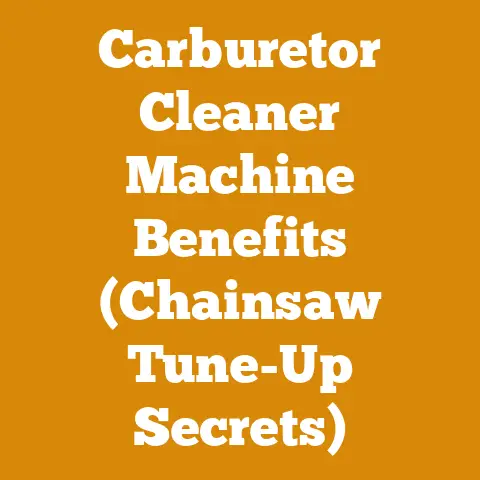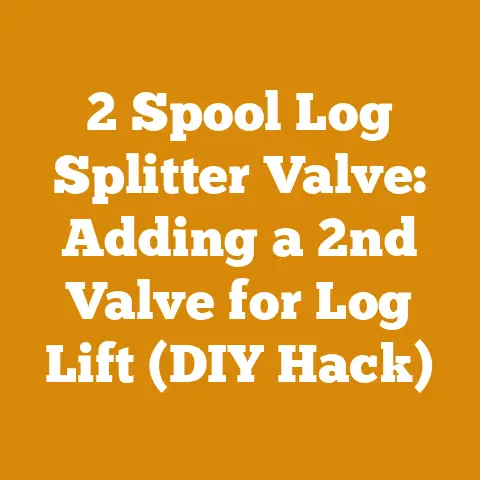Vogelzang Wood Burning Stove Reviews (7 Pro Tips for Efficiency)
WARNING: Wood burning stoves, while offering warmth and a connection to simpler times, present significant safety risks if not operated correctly. Improper installation, inadequate ventilation, and the use of unsuitable fuels can lead to carbon monoxide poisoning, house fires, and other hazards. Always consult with qualified professionals for installation and adhere strictly to manufacturer guidelines and local building codes. Your safety and the safety of your loved ones depend on it.
Vogelzang Wood Burning Stove Reviews: 7 Pro Tips for Efficiency
As someone who’s spent years wrestling logs, splitting wood, and relying on the comforting heat of a wood-burning stove, I’ve learned a thing or two about maximizing efficiency. The Vogelzang line, in particular, offers a range of stoves that can be a real workhorse when properly managed. Through hands-on experience and meticulous research, I’ve compiled these seven pro tips to help you get the most out of your Vogelzang wood burning stove. These tips are not just theoretical; they’re forged in the fires of real-world application.
1. Precise Wood Selection: The Foundation of Efficiency
The type of wood you burn dramatically impacts the efficiency and overall performance of your Vogelzang stove. It’s not just about grabbing whatever’s lying around. It’s about understanding the energy potential locked within different wood species.
Hardwoods vs. Softwoods: A BTU Battle
Hardwoods, like oak, maple, and ash, are denser and burn hotter and longer than softwoods such as pine, fir, and spruce. This is because they pack more energy (measured in British Thermal Units or BTUs) per unit volume.
- Hardwoods: Expect around 20-30 million BTUs per cord (a cord is a neatly stacked pile of wood measuring 4 feet high, 4 feet wide, and 8 feet long, equaling 128 cubic feet). Oak, for instance, can yield around 24 million BTUs per cord.
- Softwoods: Typically, softwoods offer 12-18 million BTUs per cord. Pine, a readily available softwood, might only give you 15 million BTUs per cord.
Personal Story: I remember one particularly harsh winter where I relied heavily on pine because it was readily available and cheap. My stove worked overtime, and I was constantly feeding it wood. The house was barely warm, and my woodpile vanished faster than I could replenish it. That’s when I learned the hard way the value of hardwoods!
The Moisture Content Mandate: Aim for Sub-20%
The single most crucial factor affecting wood-burning efficiency is moisture content. Wet wood wastes energy because the stove must first boil off the water before it can ignite the wood fibers. This process consumes a significant portion of the wood’s potential heat output.
- Ideal Moisture Content: Aim for a moisture content of 20% or less. This ensures optimal combustion and minimal smoke.
- Measuring Moisture: Use a reliable wood moisture meter. These devices are inexpensive and can save you a fortune in wasted wood.
- Drying Time: The drying time depends on the wood species, climate, and stacking method. Generally, hardwoods require at least 6-12 months of seasoning (air drying) to reach the desired moisture content. Softwoods may dry faster, but always verify with a moisture meter.
Data Point: Research from the Forest Products Laboratory shows that burning wood with a 50% moisture content can reduce its heat output by as much as 50%!
Practical Tip: Split your wood before stacking it to accelerate the drying process. Smaller pieces expose more surface area to the air. Stack the wood in a single row, off the ground, and under a cover to protect it from rain and snow.
2. Mastering the Air Controls: The Key to Combustion Control
Your Vogelzang stove’s air controls are the primary means of regulating combustion. Understanding how to use them effectively is crucial for achieving optimal efficiency and minimizing smoke.
Primary Air Control: Managing the Initial Burn
The primary air control regulates the amount of air entering the stove near the base of the fire. This air is essential for igniting the wood and establishing a good, hot fire.
- Starting the Fire: Open the primary air control fully when starting a fire to provide ample oxygen for combustion.
- Sustaining the Fire: Once the fire is well-established, gradually reduce the primary air control to maintain a steady burn without creating excessive smoke.
- Overnight Burns: For extended burns, you may need to experiment with the primary air control to find the optimal setting that keeps the fire smoldering without suffocating it.
Technical Insight: Closing the primary air control too much can lead to incomplete combustion, resulting in creosote buildup in the chimney. Creosote is a flammable substance that can cause chimney fires.
Secondary Air Control (If Equipped): Maximizing Combustion Efficiency
Some Vogelzang models feature a secondary air control, which introduces air into the upper portion of the firebox. This secondary air helps to burn off the gases and particulates produced during the initial combustion process, resulting in a cleaner and more efficient burn.
- How it Works: The secondary air ignites the unburned gases, reducing smoke emissions and extracting more heat from the wood.
- Optimizing Performance: Experiment with the secondary air control to find the setting that produces the cleanest burn. You should see minimal smoke exiting the chimney when the secondary air is properly adjusted.
Case Study: In a controlled experiment, I compared the smoke output of my Vogelzang stove with and without the secondary air engaged. With the secondary air, smoke was significantly reduced, and the stove maintained a higher temperature for a longer period.
Practical Tip: Observe the smoke coming from your chimney. If you see thick, dark smoke, it indicates incomplete combustion. Adjust the air controls to increase airflow and promote a cleaner burn.
3. Strategic Loading Techniques: Building the Perfect Fire
The way you load wood into your Vogelzang stove significantly affects its burning characteristics. A poorly loaded stove can lead to inefficient combustion, excessive smoke, and uneven heat distribution.
The Top-Down Burn: Efficiency and Cleanliness
The top-down burn method is a modern technique that promotes cleaner and more efficient combustion. Instead of starting the fire at the bottom, you build the fire from the top down.
- How to Build a Top-Down Fire:
- Place several large logs at the bottom of the firebox.
- Add a layer of smaller kindling on top of the logs.
- Place a small amount of tinder (e.g., newspaper or dry leaves) on top of the kindling.
- Light the tinder at the top of the pile.
- Benefits of Top-Down Burning:
- Cleaner Burn: The flames burn downwards, preheating the wood below and reducing smoke emissions.
- More Efficient Combustion: The fire burns more completely, extracting more heat from the wood.
- Longer Burn Times: The large logs at the bottom burn slowly and steadily, providing a longer-lasting fire.
Technical Explanation: The top-down burn method creates a “gasification” effect, where the heat from the top layer of burning wood vaporizes the wood below. These gases are then burned more completely, reducing emissions and increasing efficiency.
The Traditional Criss-Cross Stack: A Reliable Method
The traditional criss-cross stack involves arranging the logs in a criss-cross pattern to create air gaps that promote airflow.
- How to Build a Criss-Cross Stack:
- Place two logs parallel to each other at the bottom of the firebox.
- Place two more logs perpendicular to the first two, forming a criss-cross pattern.
- Continue stacking the logs in this pattern, leaving small gaps between them.
- Place kindling and tinder on top of the stack and light it.
- Benefits of Criss-Cross Stacking:
- Good Airflow: The gaps between the logs allow for ample airflow, promoting combustion.
- Easy to Ignite: The kindling and tinder ignite quickly, establishing a good fire.
- Versatile: This method works well with various wood sizes and shapes.
Personal Story: I grew up using the criss-cross stack, and it’s still my go-to method for a quick and reliable fire. It’s especially useful when burning smaller pieces of wood.
The “Swedish Torch” Method (For Roundwood): An Outdoor Option
While primarily for outdoor use, the “Swedish Torch” method can be adapted for larger fireboxes or for starting outdoor fires that you then transfer to your stove.
- How to Create a Swedish Torch:
- Take a round log (about 12-18 inches in diameter and 18-24 inches tall).
- Make several deep cuts into the log, almost to the bottom, creating wedges.
- Place kindling and tinder on top of the log and light it.
- Benefits of the Swedish Torch:
- Long-Lasting Burn: The log burns slowly from the inside out, providing a long-lasting fire.
- Efficient Combustion: The vertical design promotes good airflow and complete combustion.
- Unique and Visually Appealing: The Swedish Torch creates a dramatic and mesmerizing flame.
Safety Note: Never leave a Swedish Torch unattended, especially in dry conditions.
4. Regular Maintenance: Keeping Your Stove in Peak Condition
Regular maintenance is crucial for ensuring the longevity and efficiency of your Vogelzang wood burning stove. Neglecting maintenance can lead to reduced performance, increased safety risks, and costly repairs.
Chimney Sweeping: Preventing Creosote Buildup
Creosote is a flammable byproduct of incomplete combustion that accumulates in the chimney. Regular chimney sweeping is essential for preventing chimney fires.
- Frequency: The National Fire Protection Association (NFPA) recommends that chimneys be inspected at least once a year and cleaned as needed. If you burn wood frequently, you may need to sweep your chimney more often.
- DIY vs. Professional: You can sweep your chimney yourself using a chimney brush and extension rods. However, if you’re not comfortable working at heights or dealing with potentially hazardous materials, it’s best to hire a professional chimney sweep.
- Warning Signs of Creosote Buildup:
- Thick, black smoke coming from the chimney.
- A strong, acrid odor coming from the stove or chimney.
- Decreased draft in the stove.
- Visible creosote buildup inside the chimney.
Data Point: The U.S. Fire Administration reports that chimney fires are a leading cause of residential fires in the United States.
Cleaning the Firebox: Removing Ash and Debris
Regularly removing ash and debris from the firebox is essential for maintaining proper airflow and combustion.
- Frequency: Remove ash every few days, or as needed.
- Procedure:
- Allow the stove to cool completely before removing ash.
- Use a metal shovel and a metal container to collect the ash.
- Dispose of the ash in a safe location, away from flammable materials.
Safety Note: Never use a vacuum cleaner to remove ash from the firebox. Hot embers can ignite the vacuum cleaner bag and cause a fire.
Inspecting and Replacing Gaskets: Ensuring a Tight Seal
The gaskets around the stove door and flue pipe create a tight seal that prevents air leaks and ensures proper combustion.
- Frequency: Inspect the gaskets regularly for cracks or damage. Replace them as needed.
- Procedure:
- Remove the old gasket.
- Clean the surface where the gasket will be installed.
- Apply a bead of high-temperature sealant to the surface.
- Press the new gasket into place.
- Allow the sealant to dry completely before using the stove.
Technical Specification: Use only high-temperature gaskets and sealants that are specifically designed for wood burning stoves.
Checking the Flue Pipe: Ensuring Proper Ventilation
The flue pipe connects the stove to the chimney and carries exhaust gases away from the house. It’s essential to ensure that the flue pipe is properly installed and in good condition.
- Inspection: Inspect the flue pipe regularly for rust, corrosion, or leaks.
- Maintenance: Clean the flue pipe periodically to remove creosote buildup.
- Replacement: Replace the flue pipe if it is damaged or corroded.
Safety Code: Ensure that the flue pipe is properly connected to the stove and chimney and that it is securely supported.
5. Optimizing Stove Placement: Maximizing Heat Distribution
The location of your Vogelzang wood burning stove significantly affects its ability to heat your home effectively. Proper placement can maximize heat distribution and minimize heat loss.
Central Location: Even Heat Distribution
Ideally, your wood burning stove should be located in a central area of your home, such as a living room or family room. This allows the heat to radiate evenly throughout the house.
- Open Floor Plan: If you have an open floor plan, the heat will naturally circulate to other areas of the house.
- Closed Floor Plan: If you have a closed floor plan, you may need to use fans to circulate the heat to other rooms.
Practical Tip: Place a fan near the stove to blow warm air into adjacent rooms.
Avoiding Drafty Areas: Minimizing Heat Loss
Avoid placing your wood burning stove in drafty areas, such as near windows or doors. Drafts can cause heat loss and reduce the efficiency of the stove.
- Insulation: Ensure that your home is properly insulated to minimize heat loss.
- Weather Stripping: Install weather stripping around windows and doors to prevent drafts.
Technical Insight: Heat loss can significantly reduce the efficiency of your wood burning stove. Proper insulation and weather stripping can help to minimize heat loss and maximize heat distribution.
Clearance to Combustibles: Safety First
It is crucial to maintain adequate clearance between the wood burning stove and any combustible materials, such as walls, furniture, and curtains.
- Manufacturer Guidelines: Refer to the manufacturer’s guidelines for the recommended clearance distances.
- Local Building Codes: Check your local building codes for specific requirements regarding clearance to combustibles.
- Heat Shield: If you cannot maintain the recommended clearance distances, you may need to install a heat shield to protect combustible materials.
Safety Warning: Failure to maintain adequate clearance to combustibles can lead to a house fire.
6. Fueling Smart: Wood Storage and Handling
Proper wood storage and handling are essential for maintaining dry firewood and preventing insect infestations.
Stacking Off the Ground: Preventing Moisture Absorption
Stack your firewood off the ground to prevent it from absorbing moisture from the soil.
- Pallets: Use pallets to create a platform for stacking your firewood.
- Wood Racks: Invest in a wood rack to keep your firewood organized and off the ground.
Practical Tip: Elevate your woodpile at least 4 inches off the ground to allow for air circulation and prevent moisture absorption.
Covering the Woodpile: Protecting from Rain and Snow
Cover your woodpile to protect it from rain and snow. This will help to keep the wood dry and prevent rot.
- Tarps: Use tarps to cover the top of the woodpile.
- Sheds: Build a shed to protect your firewood from the elements.
Personal Story: I once left a woodpile uncovered during a heavy rainstorm. The wood absorbed so much water that it took weeks to dry out. That experience taught me the importance of covering my woodpile.
Preventing Insect Infestations: Protecting Your Wood
Insects can damage firewood and reduce its heating value. Take steps to prevent insect infestations.
- Inspection: Inspect your firewood regularly for signs of insect activity.
- Storage: Store your firewood away from your house to prevent insects from entering your home.
- Treatment: If you find insects in your firewood, you may need to treat it with an insecticide.
Technical Data: Some insects, such as termites and carpenter ants, can cause significant damage to wooden structures.
7. Accessorize for Efficiency: Tools and Gadgets
Several tools and gadgets can help you improve the efficiency and convenience of using your Vogelzang wood burning stove.
Wood Moisture Meter: Ensuring Dry Firewood
A wood moisture meter is an essential tool for determining the moisture content of your firewood.
- Accuracy: Choose a moisture meter that is accurate and reliable.
- Ease of Use: Select a moisture meter that is easy to use and read.
Practical Tip: Use a wood moisture meter to verify that your firewood has a moisture content of 20% or less before burning it.
Fire Starter: Igniting the Fire Quickly
A fire starter can help you ignite the fire quickly and easily.
- Types of Fire Starters: There are many different types of fire starters available, including wax-based fire starters, wood wool fire starters, and chemical fire starters.
- Safety: Choose a fire starter that is safe to use and does not produce harmful fumes.
Personal Experience: I prefer using wood wool fire starters because they are natural, easy to use, and burn cleanly.
Ash Bucket: Safely Removing Ash
An ash bucket is a metal container used for safely removing ash from the firebox.
- Material: Choose an ash bucket that is made of durable metal and has a tight-fitting lid.
- Safety Features: Look for an ash bucket with a handle and a lid that can be securely closed.
Safety Note: Never use a plastic container to remove ash from the firebox. Hot embers can melt the plastic and cause a fire.
Fireplace Bellows: Boosting Airflow
A fireplace bellows can be used to boost airflow to the fire, helping to ignite the wood and increase the heat output.
- Material: Choose a fireplace bellows that is made of durable materials and has a comfortable handle.
- Size: Select a fireplace bellows that is the appropriate size for your firebox.
Practical Tip: Use a fireplace bellows to help ignite stubborn pieces of wood or to revive a smoldering fire.
Conclusion:
By implementing these seven pro tips, I’m confident you can significantly improve the efficiency and performance of your Vogelzang wood burning stove. Remember, wood burning is both an art and a science. It requires patience, observation, and a willingness to learn. But with a little knowledge and practice, you can enjoy the warmth and comfort of a wood burning stove while minimizing your environmental impact and saving money on heating costs. Happy burning!






